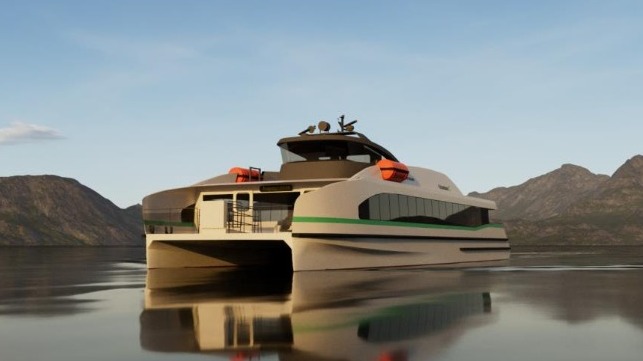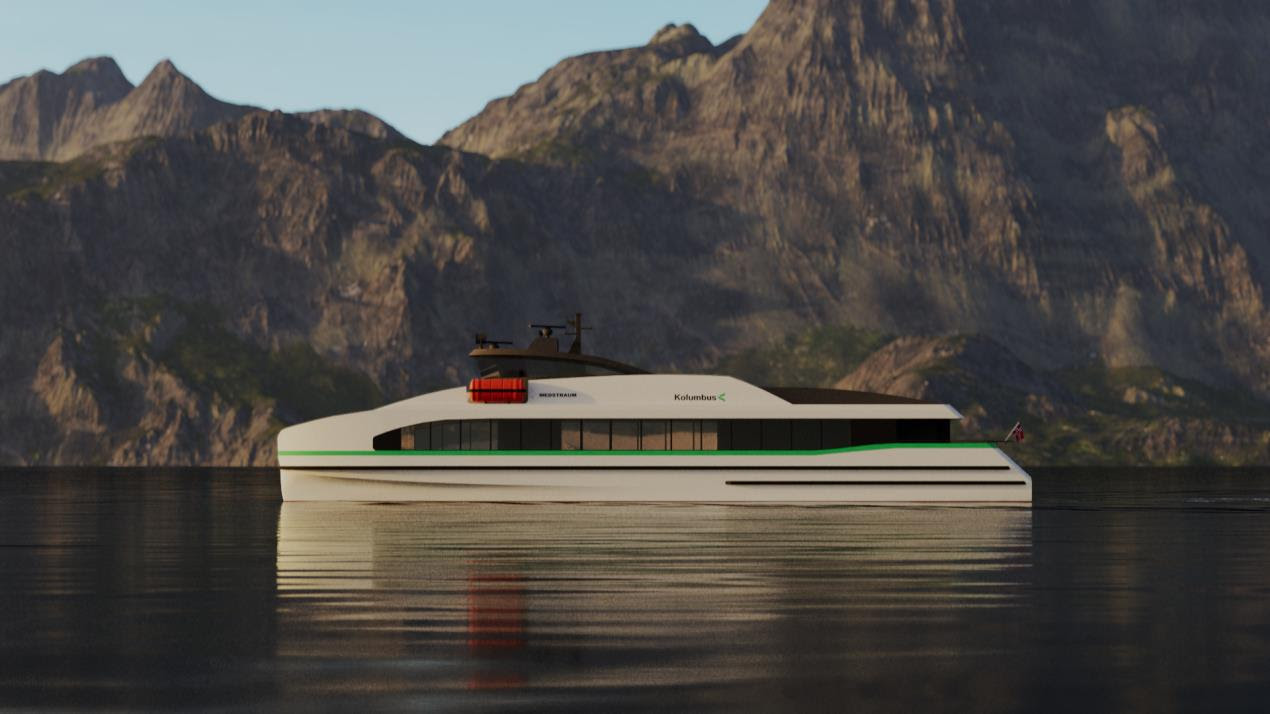Norway Builds World’s First Electric Zero-Emission Fast Ferry

Construction commenced in Norway for a fully electric passenger fast ferry, which is being called the first of its kind in the world. The vessel, which is due to enter service in the spring of 2022, is the first of three as part of a project to develop new modular methods for the design and production of zero-emission fast ferries. The first three ferries will be operated as demonstration models to validate the project’s goal to reduce investment costs and delivery time for sustainable inshore passenger transportation.
Equipped to carry approximately 150 passengers, the catamaran vessel will be approximately 100 feet long with a beam of 30 feet. Named Medstraum (Norwegian for “with electricity”) the ferry will be equipped with two electric motors and a 1.5 MWh capacity battery with charging power of more than 2 MW. The vessel is designed for a service speed of 23 knots.
Known as the TrAM project, it was initiated by industry cluster organization, NCE Maritime CleanTech, and is being coordinated by Kolumbus, the independent mobility services arm of Rogaland County Council in Norway.
According to the project organizers, this will be the world’s first fully electric and zero-emission fast ferry classed in accordance with the International Code of Safety for High-Speed Crafts (HSC Code). As the TrAM project’s demonstrator vessel, it will begin a trial passenger service between the city of Stavanger, Norway, and surrounding communities and islands in spring 2022 to test and validate the project findings.
The project scope from TrAM also includes the development of two further vessels, one for passenger operations on the River Thames in London and the other for deployment on inland waterways in Belgium.
Hege Økland, CEO of NCE Maritime CleanTech, emphasized that electric-powered high-speed vessels are highly relevant for urban areas all over the world. “Streamlined manufacturing is a very important factor as it increases the attractiveness of such vessels in terms of cost and footprint. In addition to their green credentials, they also support the renewed use of inshore waterways in Europe for freight and passenger transport,” she said.

The project partners said that they worked to optimize the design for the Medstraum and the hydrodynamic performance of the hull. Both the hull and superstructure will be built in aluminum, which will lower the vessel’s weight and energy consumption.
TrAM also used a simplified design and manufacturing for the vessels, drawing on Fraunhofer IEM’s experiences in modular production techniques from the car and aviation industries. Using advanced modularization, the project aims to lower production costs by 25 percent and engineering hours for electric fast ferries by 70 percent.

that matters most
Get the latest maritime news delivered to your inbox daily.
Project manager Mikal Dahle of Kolumbus said that by using modularization, the design concept addresses the internal complexity while allowing for external variety. Modular architecture enables individual modules to be combined so that subsequent vessels can be adapted to specific customer requirements. Reusing modules also allows for faster development and production. “Increased automation, more efficient use of materials, shorter construction time, and lower labor costs together represent a new chapter in shipbuilding while increasing the competitiveness of all stakeholders,” said Dahle.
The TrAM project started in 2018 and has secured EUR 11.7 million (approximately $14 million) in financing from the European Union’s Horizon2020 research and innovation. The project also received funding for dissemination activities from the Research Council of Norway.
